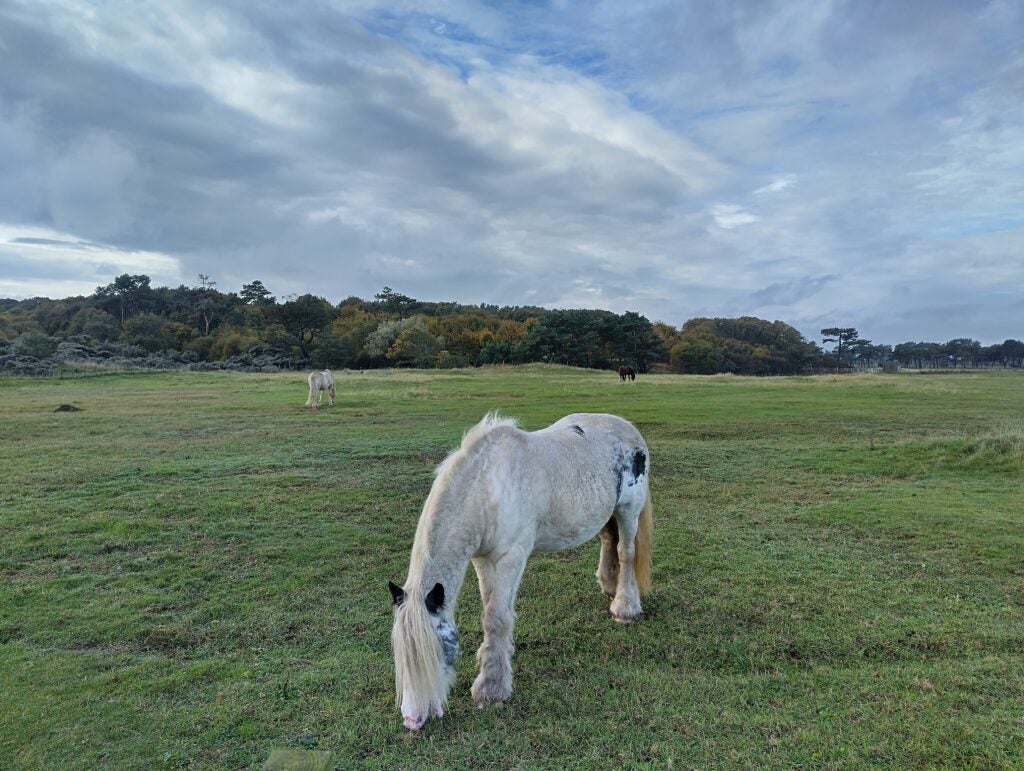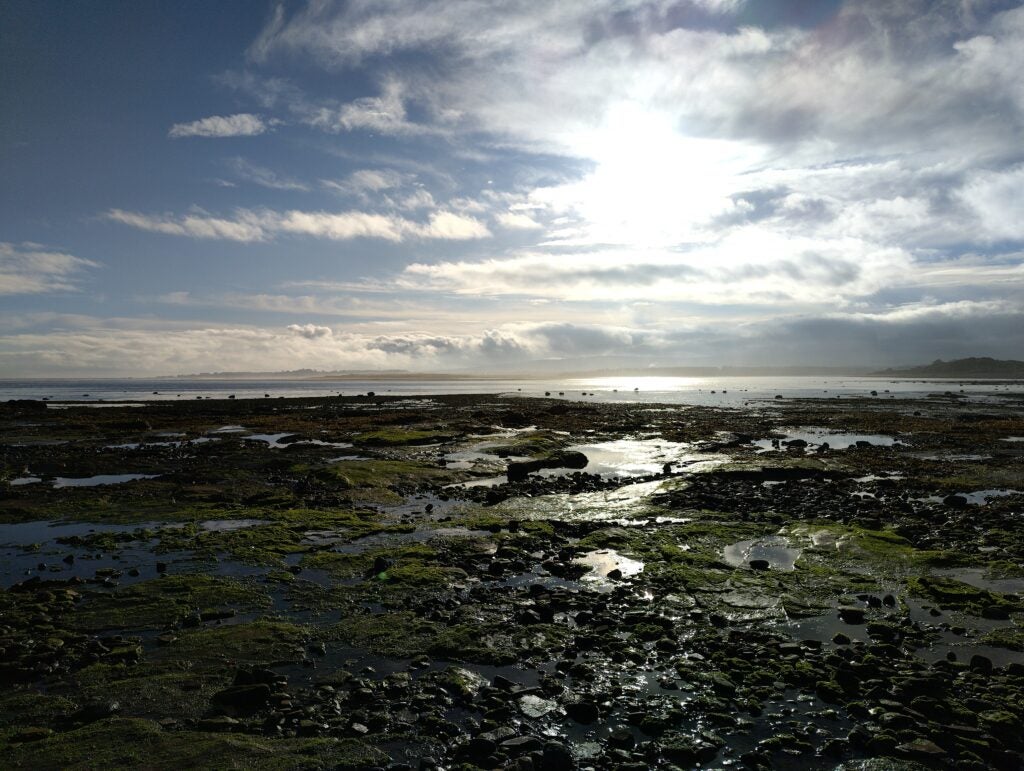The X30 5G is Nokia’s first premium handset in years, and it makes a good initial impression. As it boasts a polished design, a good screen, the promise of continued software updates, and decent battery life, this positive impression carries on with everyday use. But because of some issues with the finish, the lack of stereo speakers, and occasionally squiffy camera performance under certain conditions, it isn’t necessarily an easy recommendation.
Pros
- Decent battery life
- Long software lifespan
- Sturdy build quality
Cons
- Mono speaker
- Camera produces middling results
- Some issues with reliability
Availability
- UKRRP: £399
- USARRP: $575
- EuropeRRP: €499
- CanadaTBC
- AustraliaTBC
-
Premium feelThanks to the construction quality, this phone feels a lot more expensive than its price tag would indicate -
Fast chargingThis device supports 33W fast-charging -
Battery can last a full dayThe 4200mAh battery is good for a hard day’s usage
Introduction
It has become something of a hackneyed line, but it remains no less true in the retelling: the smartphone market is not only huge, but also hugely cut-throat. Many names have risen before falling over the years, although few have suffered such a precipitous decline as Nokia post-2012.
Since 2017, HMD Global has been attempting to rebuild the prestige behind the name with middling success. Particularly in the past two years, its efforts have been somewhat lacklustre, seemingly in need of a focus and a discernible vision as the brand has doubled down on low-end devices at the expense of more premium products.
The X30 5G is therefore a welcome return to a more ambitious type of phone design from the name that used to be a hallmark of quality. Boasting an aluminium frame, a high refresh rate screen and a 50-megapixel camera, it has many of the mod cons expected of a premium mid-range device.
However, the competition hasn’t stood still either, and the X30 5G will need to do a lot to stand out from the pack.
Design and screen
- Plastic rear
- Flat screen with a notch
- Mostly sturdy build quality
A lot of time has passed since Nokia was known for being at the forefront of phone design. In the days of Lumia and before, the Finnish firm had a reputation for crafting phones that were not only staggeringly robust but quite premium too.
More recently, design has not been a primary concern of the revived brand, which has placed an emphasis on durability at the expense of being covetable. So, it’s happy news that with the X30 5G, the story has begun to change for the better.

Aping the likes of the classic Lumia 925, this phone has aluminium side rails and a plastic back that showcases these materials, meaning the plastic is matte and pleasant to hold, while the rails are polished and prominent. Compared to the likes of the X10, and X20 from last year, this is a Nokia phone that feels as if some serious thought went into the design. Two colour options are available: Cloudy Blue and Ice White.
At 185g, it has heft and presence without being too brick-like, and the 8mm thickness and 6.4-inch screen mean it can be comfortably used one-handed, aided considerably by its nice balance in the hand.
The design here is accomplished and the boldest statement of intent from the “new” Nokia brand since 2017. It knows how to do high-end, and I hope there will be more to come in the future.
Along with this new design approach, there’s a renewed focus on sustainability. This device is said to be Nokia’s most eco-friendly phone to date, with its aluminium chassis being made of 100% recycled materials, and the plastic back make of 65% recycled materials. The packaging has also been reduced, as the box is 100% FSE certified and is made of 75% recycled materials.
Not only that, but the X30 5G is one of the first devices to be available on Nokia’s Circular subscription service, which aims to encourage users to hold on to their phones for longer and let the device be re-used or recycled afterwards, by the use of monthly investment incentives towards a range of sustainable causes.

Having said that, unfortunately the device itself isn’t all sunshine and rainbows. My review unit suffered quite a serious issue with its charging port, which refused to accept several other USB-C cables, only charging with one in particular. This may be an issue limited to that single unit, but it’s troubling nonetheless. It’s also unfortunate that the device only sports a mono speaker, not using the same stereo option as much of the competition.
Things improve when it comes to the display. For a long time, Nokia has stuck doggedly to 60Hz LCD panels that have done the job but have not kept pace with its rivals in terms of smoothness or contrast, even at significantly lower prices. Therefore, it’s encouraging to see the X30 5G paired with a 1080p 90Hz OLED display that shows good colours and gets bright enough to combat intense sunlight.
Although the refresh rate doesn’t go quite as high as that of its competitors, the difference between 90Hz and 120Hz is negligible in practice, while the lack of “one billion” colours didn’t impact the viewing experience one jot. The 1080p resolution, coupled with the relatively small screen, meant that content was sharp. Reading in particular was a pleasant experience. The screen is completely flat with no curves on the sides.
The X30 5G has a display that won’t trouble the likes of Samsung or Realme mid-range devices (such as the Realme 9 Pro Plus), but it will suffice for general use for most people.
Camera
- Two rear camera modules
- Main sensor has 50 megapixels
- Scene optimisation is active by default
As well as design, the classic Nokia was known for its camera performance. The likes of the N8, the Pureview 808, and the Lumia 1020 were built around their cameras from the ground up, and their legacy can be felt in some devices to this day.
Of course, the X30 5G is a very different phone than any of those, but it has several promising characteristics in the camera department – the most important of which is the inclusion of optical image stabilisation on the main rear module. The presence of this feature is far from a given at this price range and can mean significant improvements to low-light performance.
The sensor itself has 50 megapixels and an aperture of f1.8. It’s flanked by a 13-megapixel f2.4 ultrawide lens, and the front-facing camera is 16 megapixels with an aperture of f2.4. There’s little here of the marketing bumph that accompanies many smartphones at the moment – no 2-megapixel macro lens, no “AI quad cam” – just a focus on the central sensors. Images taken are binned to 12.5 megapixels.


It’s good then that the camera’s performance for the most part is quite encouraging. In good light, detail is well-represented (with the caveat that foliage tends to be oversharpened), and colours pop without being oversaturated. In more challenging conditions, the Auto-HDR mode kicks in, which needs a little tuning to be at its most effective – in many shots it had a tendency to overbrighten the foreground, rendering images flat and lacking in contrast.

In low light, the included Night Mode worked well to improve contrast, brightness, sharpness and saturation. Consequently, it’s one of the better performers we have seen in this price bracket. Indeed, the Night Mode also cleaned up the problems that Auto-HDR caused in most situations during the day and is quite useful as a default setting.
Predictably, the performance of the ultrawide sensor wasn’t at the same level as the main camera. However, it was passable in most situations, showing some reasonable detail and strong colour reproduction. In low light, performance took a nosedive, although this was to be expected.

Selfies from the front camera showed reasonable quality, having enough detail without revealing unfortunate blemishes.
The app itself closely follows the same style as that used by the likes of the Pixel line-up, which is to say that it works quickly, is sensibly laid out and never got in the way of taking a quick shot.
All in all, the X30 5G doesn’t quite live up to the vaunted legacy of its predecessors, but it’s a capable performer for the price.
Performance
- Runs Snapdragon 695
- Comes with 6GB of RAM and 128GB of storage by default
- Runs mostly “stock” Android
Understandably, a few corners needed to be cut to reach the X30 5G’s mid-range price. One of those corners was the processor used. The Snapdragon 695 is a new SoC, fabricated via a modern 6nm process and designed for mid-range smartphones. In the X30 5G, it’s accompanied by 6GB of RAM and 128GB of UFS 2.2 storage by default.
This may seem all well and good, but some of the competition (for example, the Realme GT2) offer the likes of Snapdragon 888 for the same price – a significant step up in terms of power.
Performance is pretty good for the most part. As is to be expected, in general use, the Nokia X30 5G flies along. There’s little in the Android interface that can give a modern phone any cause for concern, and that proves to be the case here.

When the picture moves to benchmarks, things become a little less rosy. With a single-core score of 678 and a multi-core score of 1916 in Geekbench 5, it doesn’t do much to challenge the big boys – although synthetic benchmarks are generally not reflective of real use.
In real use, the phone powers through most apps without too much difficulty, with the proviso that gaming is a different question. If you are a standard user – someone focused on the basics, such as messaging, GPS and streaming – the Nokia X30 will prove to be a dependable companion.
However, those who spend a lot of time gaming on their smartphones will likely need to seek out a more powerful option. The likes of PlayerUnknown’s Battlegrounds and Genshin Impact can run and even achieve respectable frame rates here but with significantly reduced image quality.
Battery life
- 4200mAh battery
- Capable of 33W fast charging
- No charger included
Since the halcyon days of Nokia’s dominance, there have been some definite improvements in the smartphone arena – not least in battery life. Ten years ago, a device might last roughly a day with light to moderate use, whereas now, the picture has improved significantly, with the best able to make it into a second or even a third day.
So where does the X30 5G sit in regard to battery life? The situation is mostly good, with some small caveats. The 4,200mAh battery paired with a relatively small screen and a power-sipping processor allows the X30 to get through a full day of average use in most situations. That is to say, with roughly an hour of GPS, mixed media use throughout the day and constant messaging it was possible to get from 7:00 to 22:00 before giving up the ghost completely. Those with different usage patterns would, of course, see different results, but for most, this will be more than good enough.
Things are similarly positive when it comes to the question of charging. The X30 can recharge at 33W, which isn’t the fastest solution available but proved to be sufficient to top up the battery by 72% in 30mins. Although the likes of Realme have proprietary options that allow faster charging speeds, this was enough to make a difference in a pinch and, as such, is a valuable inclusion.
Latest deals
Should you buy it?
You want decent camera performance. The camera on this device won’t knock your socks off, but you can count on it for decent snaps.
You like bigger smartphones. If you want to cram more content on your screen, then this phone isn’t for you.
Final Thoughts
Premium smartphones serve two main purposes for manufacturers. Firstly, as they are sold at higher prices, they can be used to drive revenue growth. The second, arguably more important purpose is a statement of intent. Releasing a powerful high-end device is a bold move and encourages the public at large to take notice.
As the first more ambitious design from Nokia in several years, the X30 5G is attention-grabbing almost by default. It has a robust, eye-catching design, a good-enough screen, mostly dependable cameras, strong battery life, and fast charging, completing a list of all features expected from a modern smartphone. Moreover, the experience of using it is a pleasant one, and with the promise of continued software updates, it can potentially be used for many years.
There are, of course, some drawbacks – including a lack of stereo speakers and some durability issues – and there’s also the matter of competitors. Although the X30 5G does a lot to keep up, more powerful and capable devices are available from other manufacturers for the same price (or less).
If you are on the lookout for a well-built, capable device for a reasonable price, the Nokia X30 5G should have your number. If you need the best camera, more power or faster charging, then it might be best to look elsewhere.
How we test
We test every mobile phone we review thoroughly. We use industry standard tests to compare features properly and we use the phone as our main device over the review period. We’ll always tell you what we find and we never, ever, accept money to review a product.
Used as our main handset during test period
Camera tested in variety of situations with all modes
Tested with synthetic benchmarks and real world use
FAQs
Yes, you can get 5G data speeds on this device as long as you have a compatible SIM card and network coverage.
It’s available in Cloudy Blue and Ice White (as seen in the review)
Jargon buster
5G
Offering faster download and upload speeds when compared to 4G. Great for game streaming and HDR video playback. Not supported everywhere yet and speeds vary wildly.
OLED
Organic Light Emitting Diode is panel technology that allows each individual pixel to produce light rather than relying on a backlight. This enables the screen to accurately display blacks by turning off the pixel, resulting in improved contrast compared to conventional LCD panels.
LCD
The type of display usually used on cheaper and mid-range devices. Lacks the punch on an OLED panel.
Refresh Rate
The number of times the screen refreshes itself per second.
The X30 5G is Nokia’s first premium handset in years, and it makes a good initial impression. As it boasts a polished design, a good screen, the promise of continued software updates, and decent battery life, this positive impression carries on with everyday use. But because of some issues with the finish, the lack of stereo speakers, and occasionally squiffy camera performance under certain conditions, it isn’t necessarily an easy recommendation.
Pros
- Decent battery life
- Long software lifespan
- Sturdy build quality
Cons
- Mono speaker
- Camera produces middling results
- Some issues with reliability
Availability
- UKRRP: £399
- USARRP: $575
- EuropeRRP: €499
- CanadaTBC
- AustraliaTBC
-
Premium feelThanks to the construction quality, this phone feels a lot more expensive than its price tag would indicate -
Fast chargingThis device supports 33W fast-charging -
Battery can last a full dayThe 4200mAh battery is good for a hard day’s usage
Introduction
It has become something of a hackneyed line, but it remains no less true in the retelling: the smartphone market is not only huge, but also hugely cut-throat. Many names have risen before falling over the years, although few have suffered such a precipitous decline as Nokia post-2012.
Since 2017, HMD Global has been attempting to rebuild the prestige behind the name with middling success. Particularly in the past two years, its efforts have been somewhat lacklustre, seemingly in need of a focus and a discernible vision as the brand has doubled down on low-end devices at the expense of more premium products.
The X30 5G is therefore a welcome return to a more ambitious type of phone design from the name that used to be a hallmark of quality. Boasting an aluminium frame, a high refresh rate screen and a 50-megapixel camera, it has many of the mod cons expected of a premium mid-range device.
However, the competition hasn’t stood still either, and the X30 5G will need to do a lot to stand out from the pack.
Design and screen
- Plastic rear
- Flat screen with a notch
- Mostly sturdy build quality
A lot of time has passed since Nokia was known for being at the forefront of phone design. In the days of Lumia and before, the Finnish firm had a reputation for crafting phones that were not only staggeringly robust but quite premium too.
More recently, design has not been a primary concern of the revived brand, which has placed an emphasis on durability at the expense of being covetable. So, it’s happy news that with the X30 5G, the story has begun to change for the better.

Aping the likes of the classic Lumia 925, this phone has aluminium side rails and a plastic back that showcases these materials, meaning the plastic is matte and pleasant to hold, while the rails are polished and prominent. Compared to the likes of the X10, and X20 from last year, this is a Nokia phone that feels as if some serious thought went into the design. Two colour options are available: Cloudy Blue and Ice White.
At 185g, it has heft and presence without being too brick-like, and the 8mm thickness and 6.4-inch screen mean it can be comfortably used one-handed, aided considerably by its nice balance in the hand.
The design here is accomplished and the boldest statement of intent from the “new” Nokia brand since 2017. It knows how to do high-end, and I hope there will be more to come in the future.
Along with this new design approach, there’s a renewed focus on sustainability. This device is said to be Nokia’s most eco-friendly phone to date, with its aluminium chassis being made of 100% recycled materials, and the plastic back make of 65% recycled materials. The packaging has also been reduced, as the box is 100% FSE certified and is made of 75% recycled materials.
Not only that, but the X30 5G is one of the first devices to be available on Nokia’s Circular subscription service, which aims to encourage users to hold on to their phones for longer and let the device be re-used or recycled afterwards, by the use of monthly investment incentives towards a range of sustainable causes.

Having said that, unfortunately the device itself isn’t all sunshine and rainbows. My review unit suffered quite a serious issue with its charging port, which refused to accept several other USB-C cables, only charging with one in particular. This may be an issue limited to that single unit, but it’s troubling nonetheless. It’s also unfortunate that the device only sports a mono speaker, not using the same stereo option as much of the competition.
Things improve when it comes to the display. For a long time, Nokia has stuck doggedly to 60Hz LCD panels that have done the job but have not kept pace with its rivals in terms of smoothness or contrast, even at significantly lower prices. Therefore, it’s encouraging to see the X30 5G paired with a 1080p 90Hz OLED display that shows good colours and gets bright enough to combat intense sunlight.
Although the refresh rate doesn’t go quite as high as that of its competitors, the difference between 90Hz and 120Hz is negligible in practice, while the lack of “one billion” colours didn’t impact the viewing experience one jot. The 1080p resolution, coupled with the relatively small screen, meant that content was sharp. Reading in particular was a pleasant experience. The screen is completely flat with no curves on the sides.
The X30 5G has a display that won’t trouble the likes of Samsung or Realme mid-range devices (such as the Realme 9 Pro Plus), but it will suffice for general use for most people.
Camera
- Two rear camera modules
- Main sensor has 50 megapixels
- Scene optimisation is active by default
As well as design, the classic Nokia was known for its camera performance. The likes of the N8, the Pureview 808, and the Lumia 1020 were built around their cameras from the ground up, and their legacy can be felt in some devices to this day.
Of course, the X30 5G is a very different phone than any of those, but it has several promising characteristics in the camera department – the most important of which is the inclusion of optical image stabilisation on the main rear module. The presence of this feature is far from a given at this price range and can mean significant improvements to low-light performance.
The sensor itself has 50 megapixels and an aperture of f1.8. It’s flanked by a 13-megapixel f2.4 ultrawide lens, and the front-facing camera is 16 megapixels with an aperture of f2.4. There’s little here of the marketing bumph that accompanies many smartphones at the moment – no 2-megapixel macro lens, no “AI quad cam” – just a focus on the central sensors. Images taken are binned to 12.5 megapixels.


It’s good then that the camera’s performance for the most part is quite encouraging. In good light, detail is well-represented (with the caveat that foliage tends to be oversharpened), and colours pop without being oversaturated. In more challenging conditions, the Auto-HDR mode kicks in, which needs a little tuning to be at its most effective – in many shots it had a tendency to overbrighten the foreground, rendering images flat and lacking in contrast.

In low light, the included Night Mode worked well to improve contrast, brightness, sharpness and saturation. Consequently, it’s one of the better performers we have seen in this price bracket. Indeed, the Night Mode also cleaned up the problems that Auto-HDR caused in most situations during the day and is quite useful as a default setting.
Predictably, the performance of the ultrawide sensor wasn’t at the same level as the main camera. However, it was passable in most situations, showing some reasonable detail and strong colour reproduction. In low light, performance took a nosedive, although this was to be expected.

Selfies from the front camera showed reasonable quality, having enough detail without revealing unfortunate blemishes.
The app itself closely follows the same style as that used by the likes of the Pixel line-up, which is to say that it works quickly, is sensibly laid out and never got in the way of taking a quick shot.
All in all, the X30 5G doesn’t quite live up to the vaunted legacy of its predecessors, but it’s a capable performer for the price.
Performance
- Runs Snapdragon 695
- Comes with 6GB of RAM and 128GB of storage by default
- Runs mostly “stock” Android
Understandably, a few corners needed to be cut to reach the X30 5G’s mid-range price. One of those corners was the processor used. The Snapdragon 695 is a new SoC, fabricated via a modern 6nm process and designed for mid-range smartphones. In the X30 5G, it’s accompanied by 6GB of RAM and 128GB of UFS 2.2 storage by default.
This may seem all well and good, but some of the competition (for example, the Realme GT2) offer the likes of Snapdragon 888 for the same price – a significant step up in terms of power.
Performance is pretty good for the most part. As is to be expected, in general use, the Nokia X30 5G flies along. There’s little in the Android interface that can give a modern phone any cause for concern, and that proves to be the case here.

When the picture moves to benchmarks, things become a little less rosy. With a single-core score of 678 and a multi-core score of 1916 in Geekbench 5, it doesn’t do much to challenge the big boys – although synthetic benchmarks are generally not reflective of real use.
In real use, the phone powers through most apps without too much difficulty, with the proviso that gaming is a different question. If you are a standard user – someone focused on the basics, such as messaging, GPS and streaming – the Nokia X30 will prove to be a dependable companion.
However, those who spend a lot of time gaming on their smartphones will likely need to seek out a more powerful option. The likes of PlayerUnknown’s Battlegrounds and Genshin Impact can run and even achieve respectable frame rates here but with significantly reduced image quality.
Battery life
- 4200mAh battery
- Capable of 33W fast charging
- No charger included
Since the halcyon days of Nokia’s dominance, there have been some definite improvements in the smartphone arena – not least in battery life. Ten years ago, a device might last roughly a day with light to moderate use, whereas now, the picture has improved significantly, with the best able to make it into a second or even a third day.
So where does the X30 5G sit in regard to battery life? The situation is mostly good, with some small caveats. The 4,200mAh battery paired with a relatively small screen and a power-sipping processor allows the X30 to get through a full day of average use in most situations. That is to say, with roughly an hour of GPS, mixed media use throughout the day and constant messaging it was possible to get from 7:00 to 22:00 before giving up the ghost completely. Those with different usage patterns would, of course, see different results, but for most, this will be more than good enough.
Things are similarly positive when it comes to the question of charging. The X30 can recharge at 33W, which isn’t the fastest solution available but proved to be sufficient to top up the battery by 72% in 30mins. Although the likes of Realme have proprietary options that allow faster charging speeds, this was enough to make a difference in a pinch and, as such, is a valuable inclusion.
Latest deals
Should you buy it?
You want decent camera performance. The camera on this device won’t knock your socks off, but you can count on it for decent snaps.
You like bigger smartphones. If you want to cram more content on your screen, then this phone isn’t for you.
Final Thoughts
Premium smartphones serve two main purposes for manufacturers. Firstly, as they are sold at higher prices, they can be used to drive revenue growth. The second, arguably more important purpose is a statement of intent. Releasing a powerful high-end device is a bold move and encourages the public at large to take notice.
As the first more ambitious design from Nokia in several years, the X30 5G is attention-grabbing almost by default. It has a robust, eye-catching design, a good-enough screen, mostly dependable cameras, strong battery life, and fast charging, completing a list of all features expected from a modern smartphone. Moreover, the experience of using it is a pleasant one, and with the promise of continued software updates, it can potentially be used for many years.
There are, of course, some drawbacks – including a lack of stereo speakers and some durability issues – and there’s also the matter of competitors. Although the X30 5G does a lot to keep up, more powerful and capable devices are available from other manufacturers for the same price (or less).
If you are on the lookout for a well-built, capable device for a reasonable price, the Nokia X30 5G should have your number. If you need the best camera, more power or faster charging, then it might be best to look elsewhere.
How we test
We test every mobile phone we review thoroughly. We use industry standard tests to compare features properly and we use the phone as our main device over the review period. We’ll always tell you what we find and we never, ever, accept money to review a product.
Used as our main handset during test period
Camera tested in variety of situations with all modes
Tested with synthetic benchmarks and real world use
FAQs
Yes, you can get 5G data speeds on this device as long as you have a compatible SIM card and network coverage.
It’s available in Cloudy Blue and Ice White (as seen in the review)
Jargon buster
5G
Offering faster download and upload speeds when compared to 4G. Great for game streaming and HDR video playback. Not supported everywhere yet and speeds vary wildly.
OLED
Organic Light Emitting Diode is panel technology that allows each individual pixel to produce light rather than relying on a backlight. This enables the screen to accurately display blacks by turning off the pixel, resulting in improved contrast compared to conventional LCD panels.
LCD
The type of display usually used on cheaper and mid-range devices. Lacks the punch on an OLED panel.
Refresh Rate
The number of times the screen refreshes itself per second.

























